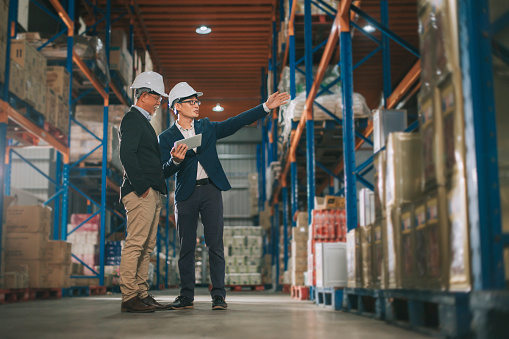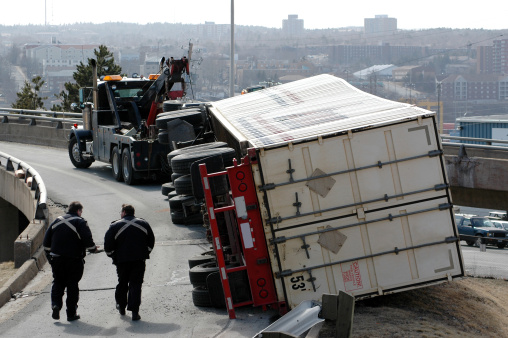
The right third-party logistics partner can help your organization improve customer service, control costs, and increase efficiency. It’s important to properly vet possible logistics partners to ensure your brand and services are well represented and the partner can deliver according to your needs.
Below are some of the things you consider in choosing a right third-party logistics partner:
Establish Communication
Logistics have gotten more sophisticated in recent years. This logistics partners need to maintain high levels of communication and data sharing between the provider and the company. It’s important to find a third-party logistics provider that you can trust and one that shares your brand’s culture and values.
Do Your Due Diligence
They did not create all logistics providers equal. If you’re selecting a new provider or changing to a different provider, it’s important to look for logistics partners with the resources and capabilities you need to reach your business goals. Providers should also be able to integrate to your existing systems, or be willing to work with you to find an agreeable solution.
Ideally, look for outstanding service across financial history, brand stability, experience working in your industry, experience in specific geographic regions, owned vs. rented assets, and compliance with regulations.
Along with talking to the providers themselves, do outside research and read reviews from other companies that worked with them. If possible, ask the provider to connect you with satisfied customers. If they stand behind their service, they will be happy to showcase happy customers.
Look for Diverse Offerings
Logistics providers typically specialize in a few domains, including commodity services, industry services, and logistics services. Their offerings can range from sourcing, shipping, transporting, and customs management. Also multi-function supply chain management and oversight for specific industries or specialization in particular sections of the supply chain.
Service add-ons are valuable to both parties. A single provider can supply several services to make your supply chain scalable and seamless. You can look for value-added amenities like IT asset management, quality control, and high-tech logistics solutions. Some common service add-ons may include rush order or emergency order handling, product kitting, reverse logistics programs, and returned material authorization agreements.
Choose Partners with Advanced Technology
A third-party logistics provider’s IT infrastructure is vital to your needs and their own. Your possible provider should own and operate the contemporary technology needed for their side of the partnership, including warehouse management systems, fleet tracking systems, and inventory analytics and controls. You could also look for order fulfillment systems, freight theft or damage management, and wares tracking using RFID or EDI.
The logistics industry is undergoing rapid change. It’s important to find providers with advanced technology solutions to address your needs as the business evolves.
Look for Customization
Depending on your industry, you may need more customization options for your business. An experienced third-party logistics provider can help you optimize inventory and deliver excellent service for your customers. Building to order, rather than relying on stock, allows you to reduce inventory and production costs.
Opt for Omnichannel Expertise
Omnichannel is essential in the modern business world and necessary for enhanced customer experience. Your third-party logistics provider should understand the ins and outs of omnichannel commerce and how to provide that exceptional experience for customers.
Look for partners with repeatable business models, proven performance with previous customers, and experience with your business type, industry, or customer base. Depending on your needs, you may want to opt for a dedicated provider that focuses on one part of the supply chain or specific product types.
Work with a Network of Locations
Effective logistics partners have strategic network configuration with optimized distribution centers. It’s vital to understand the third-party logistics provider’s warehousing asset ecosystem, such as rented or proprietary storage facilities. If your products will need many storage stops on domestic or international routes, you will need a provider that owns and manages these warehouses for quality control and security.
You should also investigate more details about the warehousing assets, including the facility sizes and capacities, scalability, and future expansion plans. Are the warehouses close to ports, airports, highways, and railways? How many trailers and containers do they typically handle in a day? Is there anything you need to be aware of about service during the busy seasons or in the event of high shipping demands?
Focus on Excellence in Service
An experienced logistics partner will dedicate to service excellence and quality management. Your third-party logistics partner will have a significant impact on how your own business and customer service functions, so you want to be sure you’re choosing a provider that’s committed to delivering for you and improving their own product.
A provider with a dedication to service excellence will continue to optimize their own processes and will look for opportunities to install better solutions whenever possible. They should be invested in their service and its success, like you are to your own company and product, and always looking to excel.
Find Brand Alignment
Your logistics partner reflects on your brand and impacts your business. To ensure you represent your brand and your vision, you need to look for a provider with a long history of success, adherence to compliance and regulations, financial stability, and a continued interest in investing in the company, facilities, equipment, systems, and resources for optimal logistics.
With the right partner on your site, you can grow into a solid relationship with a third-party logistics provider that can grow and evolve with your business. While switching to different providers occurs as business needs change, it’s much simpler to find the right provider at the start and work on developing a long-term partnership.
Key Takeaways
The supply-chain management industry has undergone radical changes in the last decade. Many third-party logistics providers emerged on the market in response to this boom and the increasing opportunities with a global marketplace. Not every provider has the tools, resources, and expertise to deliver for you, but, so do your due diligence and find a provider with a positive reputation, proven processes, and a willingness to adapt and grow.













